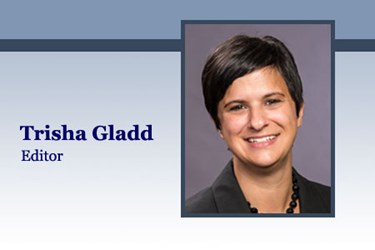A CDMO's Plan For The Future Of Biologics
By Trisha Gladd, Editor, Life Science Connect

When narrowing the field of potential manufacturing partners, finding one that is flexible enough to respond to increased production requirements in an ever-changing industry is imperative. After all, that is the reason many outsource in the first place. Peter Soelkner, managing director of Vetter, believes being flexible is not just the ability to respond to a client’s current needs but also being prepared to meet their future needs.
Expand In Order To Succeed
 |
| Peter Soelkner, managing director of Vetter |
As Soelkner sees it, the future of biologics points to an industry that can no longer dedicate itself to one blockbuster drug. Instead, a growing number of clinical and commercial projects indicate a future of biologics that requires an ability to meet an increasing demand for filling capacity. This conclusion was the driver for Vetter’s recent $100 million investment into its production sites in Germany and across the United States. “With the erosion of the blockbuster model and the strengthening of the overall injectable market, the monoplant model will no longer be viable,” notes Soelkner. “This leaves a growing need for production sites that allow for efficient manufacturing of complex and sensitive compounds.”
This isn’t the first investment Vetter has made to its facilities recently. In March 2013, its latest filling line for prefilled syringes went online, and in 2012, Vetter opened a center for visual inspection and logistics. Soelkner says the intent of these actions is simple — to fulfill customers’ needs for capacity, quality, and efficiency in a strongly growing market for injectables. “Our current investment plans include three additional filling lines in Germany and the United States. To accommodate the additional capacity and to enhance efficiency, further investments in upstream and downstream processes are also necessary.”
Develop An Effective Design
When designing filling lines, Vetter looks not only to internal expertise for the most effective design but also to the knowledge of other resources. “We use careful planning and market research to reach our decisions. Thorough mock-up studies when designing a machine are also an important approach. They allow us to simulate all routine operations and potential interventions on a machine,” says Soelkner. “In addition, close co-operation with industry experts, such as drug manufacturers, regulators, and engineers helps to find solutions that enact efficient and effective design.”
A partner should care about your product and bottom line as much as you do, and this mindset should reflect in the quality of equipment they choose to use. “We believe it’s imperative to keep an intact supply chain for our pharmaceutical customers. They are faced with intensifying competition, cost pressure, and increasing regulatory requirements,” says Soelkner. “One way a contract partner can meet these demands is by investing in equipment that is designed to result in minimal loss of API, which translates into savings for the pharmaceutical company.”
Accuracy on the filling line is also a top concern, and Soelkner says this can be achieved through an investment in equipment. “Established and validated equipment and processes that allow you to fill millions of syringes with the same precision as a couple of thousands are also necessary.” He adds, “In our business, precision is vital. Combination products involving auto-injectors, safety features, and new state-of-the-art primary packaging materials have to perform every day and every time without compromise. The design should avoid incomplete injection, glass breakage, and other sources of failure under all circumstances.”
Anticipate For Global Regulations
With so many regulatory authorities weighing in on the requirements a manufacturer needs to adhere to, understanding the specific inspection and process requirements of the varying agencies, as well as a continuous monitoring of the regulatory environment, is essential. “At this point in time, we have at least 7 to 8 different regulatory authorities from separate nations per year at our different sites, in conjunction with another roughly 35 to 40 customer audits,” explains Soelkner. “That means we have to address regulatory requirements from a global perspective, to be in line with the FDA and other authorities regarding product and patient safety.”
With more than 35 years of experience, Vetter experts expect a further increase in regulation complexity, so the need to come up with new ideas and products as a way to respond is crucial. Soelkner says one way Vetter is doing this is by minimizing human intervention in the manufacturing process. He points to Vetter’s implementation of fully automated processes and restricted access barrier system (RABS) technology as examples.
Overall, Soelkner believes the root of success lies with the ability to be as flexible as possible. “When you identify a problem, you have to find creative ways around it and ensure the final product is in compliance with the regulatory requirements of all the agencies and that you manufacture a product with high patient convenience.”
